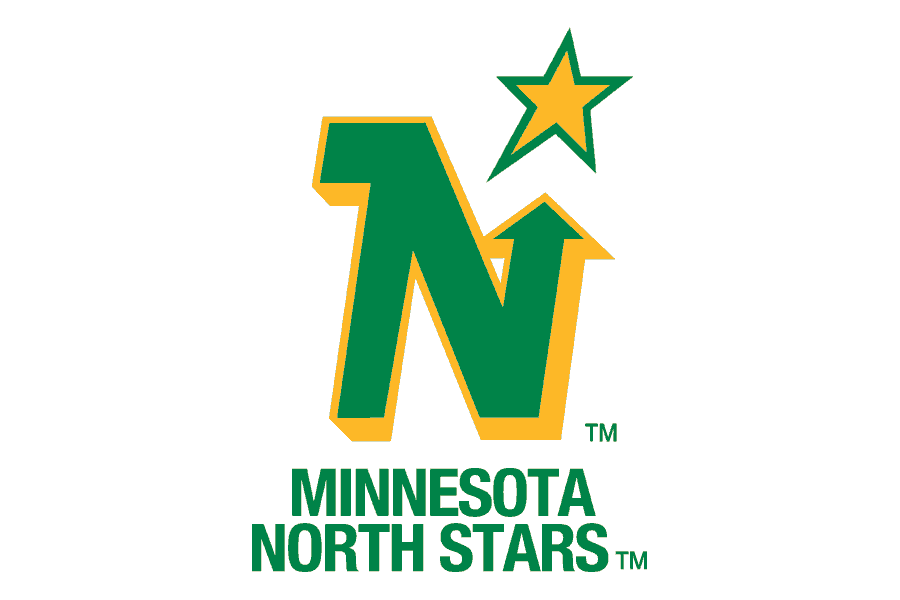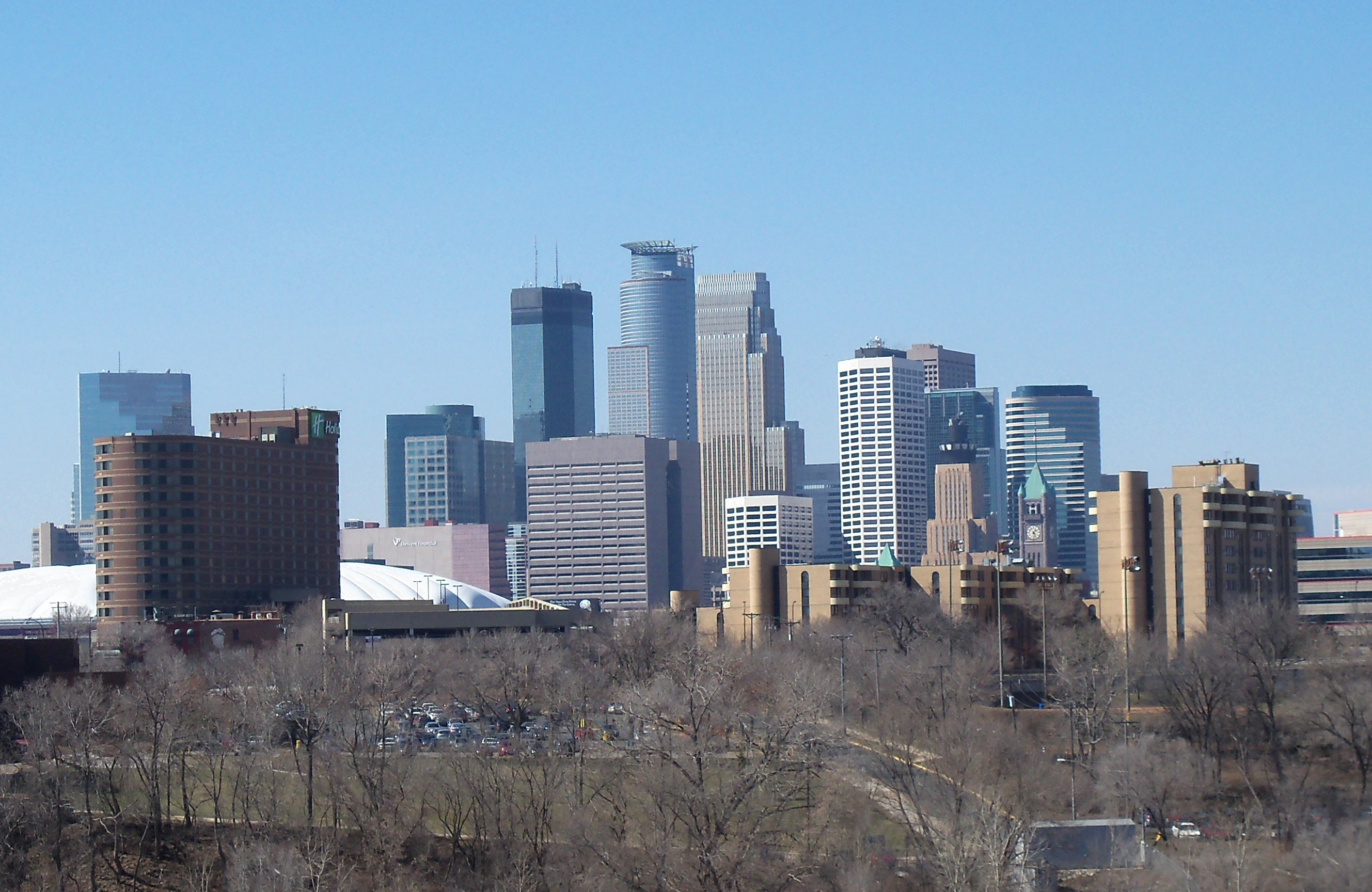This has not gone over well in Minnesota, and not just because they don't like to lose there. Nor just because they don't like losing to Dallas. (See the 1975 NFC Divisional Playoff, where the Cowboys cheated their way to a win over the Vikings.)
It's because, from 1967 to 1993, the Dallas Stars were the Minnesota North Stars. Under that name, in 26 seasons, they won 2 Division titles, reached the last 4 of the Stanley Cup Playoffs 5 times, and the Stanley Cup Finals twice, but never won the Cup.
Then came Norm Green, a mall developer and telecom investor from Calgary. He'd already had experience in moving a hockey team, as part of the Harley Hotchkiss-led group that bought the Atlanta Flames in 1979, and moved them to Calgary in 1980.
But that was different. Atlanta never really took to hockey, and the Thrashers, expanded into existence in 1999, would fail in 2011.
In 1990, at the NHL's request, Green sold his shares in the Flames, and the brothers George and Gordon Gund sold the North Stars to Green, because they preferred to own a team in the San Francisco Bay Area. This enabled the Gunds to found the San Jose Sharks.
In 1991, the North Stars reached the Finals, but lost to the Pittsburgh Penguins. In 1993, he moved the team.
He could have changed the name to the Dallas Lone Stars, which would have enabled him to keep the new Star logo, as opposed to the North Stars' N topped by a Star logo, he made them just the Dallas Stars.
That was the dumbest thing he did, but moving the team was worse than that. He cited attendance as the reason for the move. So you think you can't get enough hockey fans in cold Minnesota, but you can in hot Dallas?
Well, the team has done well in attendance in Dallas, regularly filling the Reunion Arena from 1993 to 2001, and the American Airlines Center from 2001 to 2010, before a downturn in performance led to one in attendance, but it picked up again in 2015 and remains up.
It was suggested at the time that he wanted to move to get away from the Minnesota media, which was writing unflattering things about him, in the wake of a sexual harassment lawsuit.
Green was vilified as "Norm Greed" in Minnesota, but he was a hero in Dallas. Since the move, in 23 years, the Stars have won 8 Division titles (including this year), reached the Western Conference Finals 4 times, reached the Stanley Cup Finals twice, and won the Stanley Cup in 1999.
Norm Green. This guy is a secret underground lair away
from being a villain in a James Bond movie.
Despite the founding of the Minnesota Wild and the opening of the Xcel Energy Center in St. Paul, both on the Autumn of 2000, Green has not been forgiven by Minnesotans. Should he be?
Top 5 Reasons You Can't Blame Norm Green for Moving the Minnesota North Stars to Dallas
First, a few reasons that didn't make the cut: The Best of the Rest.
The Early 1990s Recession. Contrary to what conservatives said in 1993, as new President Bill Clinton was enacting the economic plan that restored America to prosperity, the recession that hit in 1990 really was bad. That drove down attendance to the kind of level that made Green complain.
Burnout. From March 1991 to April 1992, just a shade over 1 year, the Twin Cities hosted the Frozen Four, the World Series, the Super Bowl and the Final Four. They were scheduled to host the NBA All-Star Game in 1994, hosted by the NBA team they'd just gotten. As a result, Minneapolis-St. Paul felt more "major league" than it ever had. Maybe losing the North Stars really didn't matter that much.
The Softenings of the Blow. Maybe Minnesotans thought that losing their NHL team was a tragedy. But was it, really? Losing baseball teams crushed New York in 1957 (especially the Borough of Brooklyn, which has never recovered emotionally), Milwaukee in 1965, Seattle in 1970, and Washington in 1971. Losing NFL teams was a blow to Oakland in 1982, Baltimore in 1984, St. Louis in 1987 (though not so much in 2016), Los Angeles and Cleveland in 1995, and Houston in 1996. Each of those cities felt a little less "major league."
But losing an NHL team? It didn't hurt the Bay Area and Kansas City much in 1976, or Cleveland in 1978, or Colorado in 1982. It did hurt Quebec City in 1995 and Winnipeg in 1996, because that hurt Canada's psyche as much as losing an MLB or NFL team would to an American city's. It hurt Hartford in 1997, but that was because the Whalers were all they had.
Minnesotans still had high school and college hockey, and teams in MLB, the NFL, the NBA, and college football and basketball. And they did get the announcement of the Wild in 1997, just 4 years later, to take the ice in 2000, just 7 years after the North Stars were taken away.
So was it really all that bad? It's better than Cleveland got with the new Browns, New York (at first) got with the Mets, and much less of a wait than Baltimore had until the Ravens, Winnipeg with the reborn Jets, Colorado with the Avalanche, or Quebec City, which still doesn't have a replacement team. The wait has now also been exceeded by that of Seattle for a replacement for the SuperSonics.
Okay, the '99 Cup being won by the same franchise in Dallas must've stung. But there's no guarantee they would have won it had they stayed in Minnesota.
Now for the Top 5:
5. The Attendance Really Was Bad. Green may have been a greedy jerk and a womanizer, but on this subject, he was not a liar. In 1982, in the wake of the previous season's trip to the Finals, Stars fans filled the Metropolitan Sports Center to capacity, averaging 15,220 fans per home game. But it declined: From 1985 to 1993, it never again topped 14,000.
By 1988, it was under 12,000. In the Finals year of 1990-91, it was a mere 7,838. That is not a typographical error: Seven thousand, eight hundred thirty-eight. The Chicago Blackhawks get nearly 3 times that now. Even in the final season, believing that increased attendance could change Green's mind and get him to keep the team in what's now known as "The State of Hockey," it was only 13,910 fans per game.
Much like the Brooklyn Dodgers and the Baltimore Colts before them, and the Cleveland Browns after them, North Stars fans didn't support their team in the kind of numbers that their enthusiasm then and their angst shortly thereafter would suggest.
Green could have been a decent man who wasn't getting sued for bad behavior toward women, and he still would have had a great reason to move the team. If Minnesotans who were already salaried adults in the George H.W. Bush years want to blame someone for their team moving, the 1st place they need to look is in the mirror.
4. The Golden Gophers. The University of Minnesota had the State's, and the Twin Cities', most popular hockey team. By 1993, they'd already reached what's now known as the NCAA Frozen Four 14 times (they've since raised that number to 21), and won National Championships in 1974, 1976 and 1979. They have added them in 2002 and 2003, for 5 titles. The women's team has won 7 titles.
Mariucci Arena, with banners
3. New Buildings. The NBA's expansion Minnesota Timberwolves got a new arena, the Target Center, in 1990, after playing their 1st season in the Metrodome. And the Twins and Vikings had gotten the Metrodome only a few years earlier, in 1982. The City of Minneapolis was willing to build new venues for them, but not for the North Stars. Nor was the City of Saint Paul. Nor was Hennepin County (where Minneapolis is). Nor was Ramsey County (where St. Paul is). Nor was the State of Minnesota. Why couldn't the North Stars get a new arena?
Why did the North Stars need a new arena? The Met Center was in suburban Bloomington, 9 miles south of downtown Minneapolis. Today, the Metro Blue Line light rail connects downtown with the Mall of America, built in stages on the sites of Metropolitan Stadium and the Met Center. But it didn't open until 2004, long after the Twins, Vikings, and North Stars left.
Some sports venues have their naming rights bought by a bank.
This one looked like it was a bank.
At the time, it wasn't so easy to get there from Minneapolis without a car. It was even harder from St. Paul, 12 miles away. In contrast, the Metrodome site, now nearly fully converted into U.S. Bank Stadium, the new home of the Vikings, and the Twins' new home of Target Field, and the Target Center are all adjacent to light rail stations downtown. The Xcel Energy Center in downtown St. Paul has public transit access as well.
So why didn't Green simply negotiate to move the North Stars into the Target Center? Because it was built with basketball specifically in mind. As Islander fans are now finding out at the Barclays Center in downtown Brooklyn, when you try to squeeze a hockey rink into a venue built for basketball, the sight lines don't work out very well.
This was also true of old NHL arenas like the 1925-68 version of Madison Square Garden, the Boston Garden, Chicago Stadium, the Olympia in Detroit, and the Buffalo Memorial Auditorium: Unlike the Montreal Forum and Maple Leaf Gardens in Toronto, these arenas weren't built for hockey, with its 200 feet by 85 feet rink, or even for basketball, with its 94 feet by 50 feet court; but for boxing, at the time a much bigger sport than either, with its ring being between 16 and 20 feet square. As Celtics boss Red Auerbach said of the Boston Garden, "The seating's all cockeyed."
So moving the North Stars into a basketball-specific arena would have created a problem that might well have outweighed all the problems it solved.
2. Dallas. It's a sports-crazy city with a lot of transplants from hockey areas, and lots and lots of money. Dallas was rolling in it in the early Nineties, from the energy, insurance and banking industries. Minneapolis may have been an agribusiness, pharmaceutical and technological giant once upon a time, but by the Daddy Bush years, its business glory days were long gone.
Downtown Minneapolis, as seen from
the University of Minnesota campus.
Photo taken in 2013. Note the Metrodome still standing.
And, as we've seen, the Stars have done well in Dallas, both on the ice and at the box office. Hockey in Texas may never feel quite right, but this "marriage" has stood the test of time thus far.
Downtown Dallas
1. Gary Bettman. Whatever the Commissioner of the National Hockey League wants, he gets. He wanted fewer teams in the Snow Belt, and more teams in the Sun Belt. The fact that he had to give Minnesota an expansion franchise shortly thereafter shows that he was wrong. But it is also a fact that, if he had wanted the North Stars to stay in Minnesota, they'd still be there, probably playing at the Xcel Center in St. Paul, while Dallas, rather than Minnesota, would have gotten an expansion franchise.
VERDICT: Not Guilty. Norm Green may have been Norm Greed, but he had legitimate reasons for moving the team, and for where.
Hopefully, with the NHL now long restored to the Twin Cities, and the Wild having been good more often than not, the statute of limitations has expired, and Minnesota hockey fans can focus on the future, not on the past.





You're stupid
ReplyDeleteBased on what, exactly?
ReplyDelete